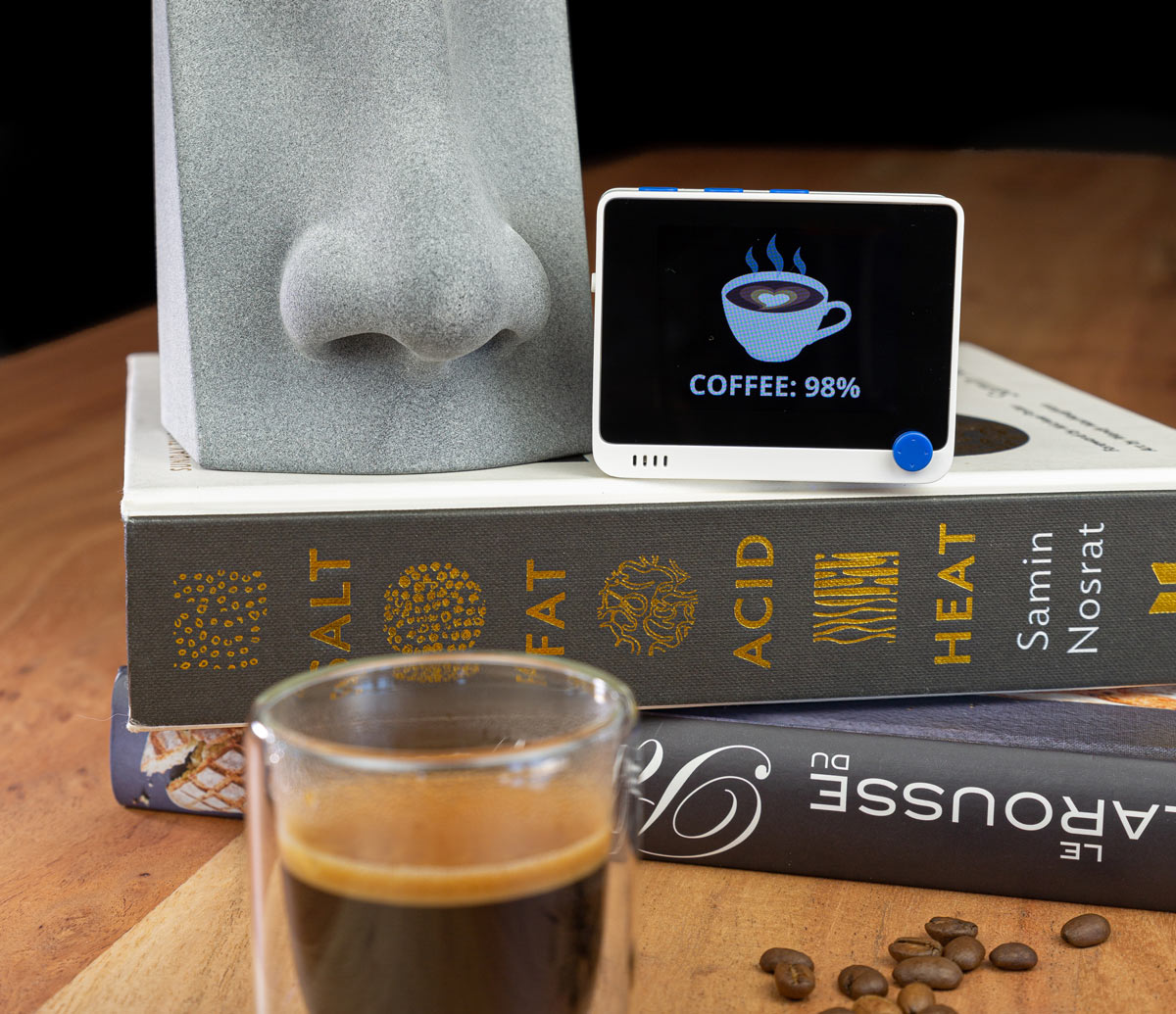
It was a long weekend of May 2020. Like many of my human siblings stuck at home with time on their hands due to an ongoing pandemic, I was busy trying to perfect my bread recipe. In fact, just a few days before, I had ordered a gas sensor (Figure A below) that I thought would be ideal to help me monitor my sourdough starter and bake my bread at just the right moment.


And then I thought about it some more. “Surely, this is the perfect excuse for me to finally start learning this machine learning thing that everyone’s talking about. But … do I really want to bake dozens of baguettes before I have a training set large enough to teach an AI the relationship between the olfactory fingerprint of the sourdough starter and the yumminess of the final loaf? Plus, flour is pretty scarce these days!”
That’s how, over the course of the next few days, I ended up building a DIY, general-purpose, artificial nose — one that can smell virtually anything you teach it to recognize! The artificial nose is powered by artificial intelligence — a TinyML neural network that I trained using the free online tool Edge Impulse and then uploaded onto an Arduino-compatible microcontroller.
I learned a lot along the way, and not just about machine learning. From designing my first 3D enclosure to rudimentary fluid dynamics (the airflow within the nose is not exactly optimal), it was the first time I built my own “thing” from scratch, so I’m excited to share it with the Make: community. Here are the steps for replicating the build for yourself.
A DIY Solution for Anosmia?

Anosmia refers to a temporary or permanent loss of the ability to smell. Among U.S. adults over 40, some 3% suffer from total anosmia and 23% report some alteration in their ability to smell. Add Covid-19 to the mix, and you get even more people impaired in their day-to-day olfactory life.
Since I started sharing my project, I’ve heard dozens of stories of folks being impacted by anosmia. Has that bottle of milk gone sour? Does the dog need a bath? Could I use a shower? For many, those everyday questions are just impossible to answer. And while a cheap, DIY electronic nose will likely not replace a fully functional human nose anytime soon, it could most certainly become a great companion for those suffering from anosmia.


